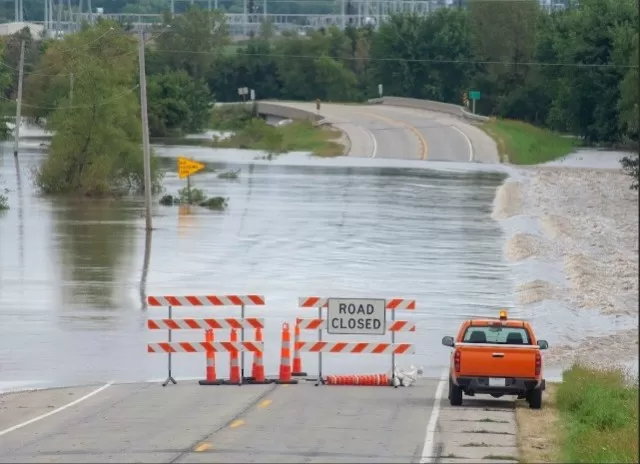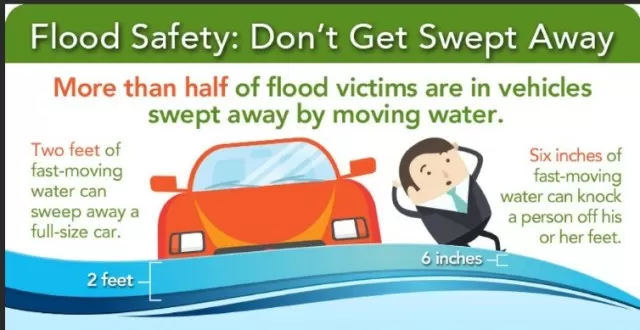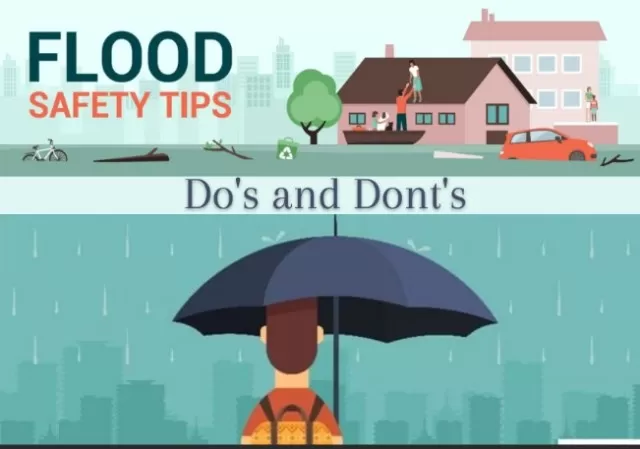Flood Survival: Critical Actions to Avoid.Floods can pose a significant threat, even with just a few inches of water, and their onset can be remarkably rapid.
They can occur suddenly during intense rainstorms, when dams or levees fail to contain rising water levels, or when snow melts at an accelerated pace. It is crucial to understand the potential dangers associated with floods and take appropriate precautions to safeguard lives and property.
During heavy rainfall, the ground may become saturated, leading to an increased risk of flash floods. These floods can develop within minutes or hours, catching people off guard and making it challenging to react swiftly. Additionally, the failure of dams or levees can result in a sudden surge of water, inundating nearby areas and causing widespread flooding.
When Floods Occur: Essential Steps to Take and Mistakes to Avoid

Floods, a natural disaster with devastating consequences, claim more lives annually in the United States than tornadoes, hurricanes, or lightning strikes, as stated by the National Severe Storms Laboratory.
By the time floodwaters encroach upon your residence, it is already too late to formulate an effective response. Therefore, it is imperative to engage in discussions with your family beforehand, deliberating on evacuation plans and strategies to cope with a flood situation.
Maintaining a calm and composed demeanor becomes paramount, enabling you to make rational decisions in the face of adversity. In this article, we present a comprehensive list of nine actions that should never be undertaken during a flood, to help you navigate this hazardous scenario with prudence and foresight.
Heed Evacuation Alerts: Neglecting them Can Lead to Peril
When authorities issue evacuation warnings, it is crucial to take immediate action and evacuate the area promptly.
Ignoring such alerts can expose you to the danger of being trapped in a hazardous situation with no means of escape. Furthermore, it is vital to strictly adhere to road barricades, as they are strategically placed by local responders to ensure the safe diversion of traffic away from flooded regions. Disregarding these barricades not only endangers your life but also hampers the efforts of emergency personnel in managing the crisis effectively. By respecting evacuation orders and following the guidance of authorities, you significantly enhance your chances of safeguarding yourself and your loved ones during a flood.
Avoid Driving Through Flooded Areas

It is imperative to refrain from driving through floodwaters, as even a mere 6 inches of swiftly flowing water has the potential to sweep away most vehicles, as highlighted by the National Severe Storms Laboratory.
Moreover, submerged roads during floods present an array of hidden hazards, making it extremely challenging to assess their condition. Beneath the water’s surface, a sinkhole or other dangers may lurk, posing a significant risk to motorists.
By abstaining from driving through flooded areas, you prioritize your safety and minimize the chances of being caught in a life-threatening situation. Remember, it is always better to seek alternative routes or wait for floodwaters to recede before attempting to navigate the roads again.
Prioritize Electrical Safety: Avoid the Risk of Electrocution
In the event of flooding at your residence, it is crucial to adhere to guidelines concerning the shutdown of utilities.
The Electrical Safety Foundation International strongly advises following the instructions to switch off the main power source to your home. To accomplish this, it is recommended to flip each individual breaker first and then proceed to turn off the main breaker. Additionally, it may be necessary to shut off the main valve responsible for controlling the gas and water supply to your home. By taking these precautionary measures, you significantly reduce the risk of electrocution and safeguard yourself and your property from potential electrical hazards associated with flooding. Prioritizing electrical safety is of utmost importance during such emergencies to prevent accidents and ensure the well-being of all occupants.
Seek Higher Ground: Avoid Low-Lying Areas

In the unfortunate event of being trapped in a home or building during a flood, it is crucial to make your way to the highest possible level.
However, it is important to note that climbing into a closed attic should be avoided, as this can potentially lead to entrapment due to rising floodwaters. Instead, focus on reaching an elevated area within the structure that provides the greatest level of safety.
Only as a last resort, when absolutely necessary, should you consider moving onto the roof to signal for help from emergency crews.
This step should be taken judiciously and with caution, as it exposes you to additional risks. It is important to assess the urgency of the situation and make a decision based on the immediate need for assistance.
By seeking higher ground and avoiding low-lying areas, you enhance your chances of staying safe until help arrives.
Prioritizing your personal safety and making informed decisions in challenging circumstances is vital during a flood to ensure the best possible outcome.
*The information is for reference only.